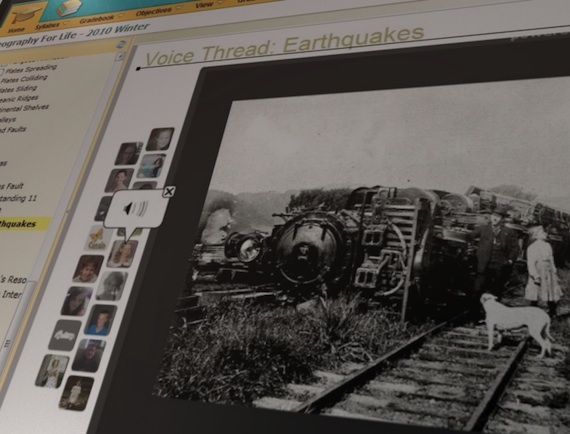Open Content in Practice
A virtual high school in Utah shuns textbooks and relies on open content for 100 percent of its coursework.
- By Bridget McCrea
- 03/02/11
When Open High School of Utah started up in 2009, there were no textbooks to order, no buildings to construct, and no classrooms to outfit. The traditional "classroom" as we know it was overlooked in favor of a virtual environment that not only didn't require physical facilities but also didn't rely on age-old conventions like textbooks.
Teacher-Developed Materials
That's because the Salt Lake City-based public charter school utilizes open content coursework created by its instructors and made available online for all students. "We're a full-service, online high school," said DeLaina Tonks, director. "The entire curriculum is housed on the Web and accessible 24/7."
Open High School is a public charter school for Utah high school students. The institution is free to attend, although there are nominal charges at the beginning of the year for yearbooks and equipment.
The brainchild of David Wiley, an associate professor of instructional psychology and technology at Brigham Young University and the founder of OpenContent.org, Open High School grew from its founders' desire to "see if a completely open content school would really work," said Tonks.
Wiley paired up with Tonks and Robyn Bagley, current board chair, to bring his idea into reality in 2009, when the school launched with 225 ninth-grade students. In 2010, 125 tenth graders were added to the roster, and another 250 upper-level pupils will joined them in 2011.
The Benefits of Open: Cost Control and Relevant Content
Tonks said the educator-developed open content approach has yielded two major benefits: cost savings and a confidence in the fact that the coursework is up to date and relevant. "Clearly the courses we have are cheaper to produce than buying textbooks," said Tonks, who estimated that teachers and curriculum developers earn $8,000 to $10,000 to produce one course.
"We looked at the multimillion dollar curricula being produced out there and knew we could do a pretty good job of replicating that in a cheaper model," said Tonks. "We see ourselves as the 'Jet Blue' of our industry. We don't have the glitz; we like to see what we can produce on a shoestring budget."

A geography course in action at Open High School; more examples of open courses can be found at the school's demonstration site here. |
Taking the DIY approach also helps Open High School circumvent a "panic" of sorts that's taken hold in the educational field, where expensive textbooks become outdated quickly. "With the core standards changing, schools that bought books this year or last are having to replace them at a significant cost," said Tonks. "The steps we'll have to take to make sure our open curriculum is in line with the common core will be more much cost effective."
Adapting to Standards
Using open content also allows teachers more freedom to adapt and flex when needed. Curriculum changes are part of the job description for teachers, who are expected to keep their courses relevant, up to date, and in line with state and national standards. "If the teachers try something and it doesn't work, they can toss it out," said Tonks. To keep track of what is and isn't working, she said the school keeps tabs on its course data, paying particular attention to standards alignment.
"We use the standards as the framework and then gather open content and match it to state standards," said Tonks. "From there, we use teacher-created materials to fill in the gaps. After a quick assessment, we can tell which items were valid and which were not."
With the data in hand, teachers can develop more practice exercises, integrate more concepts, and present the coursework in different formats. "Ensuring that the open content meets our students' needs as closely as possible is a continual process," said Tonks.
Initial Challenges
Accredited through the Northwest Association of Accredited Schools, Open High School initially faced skepticism when its founders were requesting the credentials. "The woman who came to visit was thrown off a bit by the fact that we had a laptop, and not an actual school building to walk through," said Tonks. "The openness of having everything housed online was new to her."
Tonks, Wiley, and Bagley were up to the challenge of showing exactly why their innovative institution was worthy of accreditation. They pulled up screenshots of teachers working in real-time and showed the reviewer the entire curriculum "from start to finish," said Tonks. "We were flies on the wall of every classroom. That's something you can't do in a brick-and-mortar school."
By the end of the accreditation process, Tonks said the reviewer held a new appreciation for open curricula and its viability in today's educational environment. "We took all of the guesswork out of it," said Tonks, "and showed her in real-time exactly how we were doing everything, how effective the process is, and how successful it is for teaching. Our school was accredited with no resistance."
Continued Expansion
Open High School will graduate its first class in 2013 and will expand to 1,500 students over the next three years. Coursework for the new 11th and 12th grade students who will start for the 2011-2012 school year is currently under development.
"We're attracting a lot of 21st Century students who are excited about learning in their own element, and on their own schedules," said Tonks, "instead of being in a traditional setting, where they get a predetermined 50 minutes of instruction."